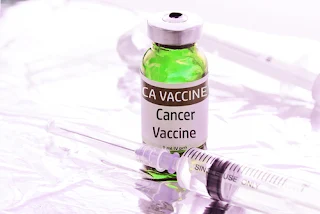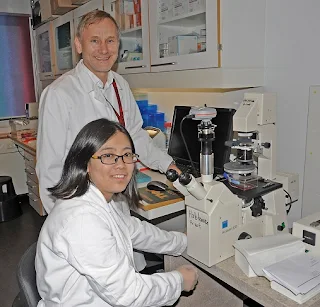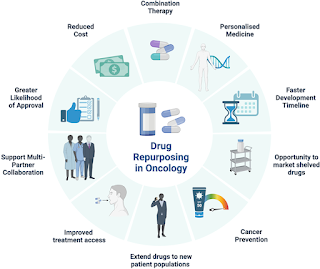Presentation
In tending to the intricacies of serious blood disease cure, the blending of corresponding pharmacotherapy has arisen as a vital procedure. This far-reaching technique offers a promising answer for overcoming the difficulties connected with immunotherapy in most malignant blood growth.
A multidisciplinary strategy is necessary to overcome the obstacles associated with immunotherapy in aggressive blood disorders. It is crucial to emphasize in presentations the complexity of the immune system's interactions with cancer cells, including evasion strategies and immune suppression occurring inside the tumor micro-environment. It can give hope to highlight the continuous research being done to clarify these pathways and create novel immunotherapy approaches specific to blood malignancies.
The possibility for overcoming resistance and improving treatment results might be emphasized by talking about the significance of combination medicines, biomarker identification, and patient stratification based on molecular profiling. Furthermore, highlighting the improvements in survival rates and quality of life that immunotherapy has brought about for patients with severe blood illnesses can inspire additional funding and cooperation in this vital field of cancer research and care.
Figuring out the Scene of Forceful Blood Malignant growth
Forceful blood malignant growths, which incorporate intense myeloid leukemia (AML) and high-risk myelodysplastic disorders (MDS), present strong constraints in ideal therapy models. These malignancies are described via expedient turn of events and protection from ordinary cures, requiring inventive techniques for strong administration.
Determining the site of a potent blood danger necessitates a complex analysis of various factors, such as genetic alterations, environmental effects, and adaptive system responses. Researchers study how these elements work together to drive the development of aggressive blood cancers such as lymphoma and leukemia. Through deciphering the fundamental mechanisms underlying these illnesses, scientists hope to develop targeted therapies that disrupt carcinogenic cycles while confining damage to healthy cells.
 |
| Men are roughly twice as likely as women to have kidney cancer 🦀 |
Developments in personalized medicine and genomic profiling present intriguing avenues for tailoring drugs to specific patients, improving outcomes, and raising overall endurance rates. Furthermore, ongoing efforts to unravel the complexities of growth micro-environments provide important insights into potential therapeutic targets and systems to effectively combat aggressive blood cancers.
Immunotherapy: A Progressive Methodology
Immunotherapy has cured most cures of disease via saddling the strength of the invulnerable framework to battle harmful cells. Be that as it may, its adequacy in aggressive blood, most malignant growth has been bound through different variables: comprehensive of cancer heterogeneity, immunosuppressive micro-environments, and growth avoidance systems.
Using the body's immune system to fight cancers, immunotherapy is a cutting-edge approach to cancer treatment. Immunotherapy targets cancer selectively, reducing side effects, in contrast to conventional treatments like radiation and chemotherapy, which can damage healthy cells. Even at more advanced stages of the disease, immunotherapy offers hope for more effective and long-lasting results by boosting the immune system or specifically targeting cancer cells.
 |
| A rise in cancerous cells reduces the immune system's ability to fight cancer |
Research on immunotherapy is still ongoing, looking into new strategies such as immune checkpoint inhibitors, CAR-T cell therapy, and cancer vaccines. Immunotherapy has the potential to treat a variety of malignancies, maybe prevent disease recurrence, and increase long-term survival rates as our understanding of immune responses to cancer expands.
Challenges Confronted with the guide of Immunotherapy in Forceful Blood Malignant growth
Immunotherapy presents a promising methodology in the treatment of forceful blood malignancies, yet it likewise faces critical difficulties. One snag is the complicated interchange between malignant growth cells and the invulnerable framework, as cancers can dodge resistant locations or smother safe reactions. Furthermore, distinguishing explicit antigens on malignant growth cells that can be designated by immunotherapy stays a test, particularly in heterogeneous illnesses like leukemia and lymphoma.
 |
| The newest designed "drug" for the treatment of cancer is d.T.c, or designer chimeric antigen receptor (CAR) T cells |
Also, a few patients might encounter insusceptible related unfriendly occasions, going from gentle to extreme, which require cautious administration. One more test is the improvement of protection from immunotherapy after some time, prompting treatment disappointment and illness movement.
Besides, the significant expense of immunotherapy drugs presents monetary hindrances to get to, restricting its accessibility to certain patients. Regardless of these difficulties, continuous exploration endeavors are centered around conquering these hindrances through blended treatments, biomarker distinguishing proof, and novel immunotherapy approaches customized to the interesting qualities of forceful blood malignant growths. By tending to these difficulties, the capability of immunotherapy to further develop results for patients with forceful blood malignancies can be completely understood.
Growth Heterogeneity
Forceful blood tumors withstand go with intercultural heterogeneity, presenting requesting circumstances for immunotherapeutic intercessions. This increase in population growth can cause variable reactions to immunotherapy and the rise of treatment-safe clones.
The variety of cellular traits found within a tumor mass, such as variations in gene expression patterns, cellular activities, and genetic alterations, is referred to as growth heterogeneity. Different cancer cells, smaller groups of people with differing levels of aggression, potential for metastasis, and reactivity to treatment may result from this variety. Cancer treatment has difficulties due to growth heterogeneity, since some subclones may become resistant to medication or avoid it, which could cause the disease to worsen and recur.
To create individualized treatment plans that focus on particular tumor variants or vulnerabilities, it is crucial to comprehend and describe growth heterogeneity. Thanks to developments in single-cell sequencing, imaging, and genomic profiling, researchers are now better equipped to understand tumor heterogeneity and pinpoint personalized therapy targets, which will ultimately lead to better cancer management outcomes.
Immunosuppressive Micro-environments
The growth of the micro-environment plays a basic capability in tweaking resistant reactions to-wards disease cells. In forceful blood malignant growth, the immunosuppressive milieu made through administrative Lymphocytes, myeloid-determined silencer cells, and cytokines hinders the adequacy of immunotherapeutic specialists.
Immunosuppressive micro-environments are districts inside growths portrayed by factors that block the body's safe reaction against disease cells. These conditions frequently contain invulnerable cells, like administrative Lymphocytes and myeloid-inferred silencer cells, alongside cytokines and other flagging particles that hose safe action. Furthermore, growth cells can create inhibitory particles like PD-L1, which interface with invulnerable cells to forestall their enactment against the cancer.
Immunosuppressive microenvironments advance growth invulnerable avoidance, permitting disease cells to multiply uncontrolled and oppose immunotherapy medicines. Understanding the components of fundamental immunosuppressive microenvironments is vital for creating procedures to conquer safe avoidance in malignant growth and improve the adequacy of immunotherapy draws near. Remedial mediations focusing on these microenvironments mean to reestablish safe capability and support against growth resistant reactions, eventually working on persistent results in disease treatment.
Cancer Avoidance Components
Disease cells select various procedures to avoid safe reconnaissance and annihilation, accordingly confining the viability of immunotherapy. Instruments which incorporate down-regulation of antigen shows, up-regulation of invulnerable designated spot particles, and enlistment of immunosuppressive pathways make a commitment to cure opposition.
 |
| The risk of liver, esophagus, and head and neck cancer can be decreased by cutting less on alcohol. |
Malignant growth aversion parts include different variables and ways of behaving that can diminish the gamble of creating disease. These incorporate way of life decisions, for example, keeping a solid eating regimen, taking part in ordinary active work, keeping away from tobacco and over the top liquor utilization, and rehearsing sun well-being measures. Furthermore, disease aversion includes limiting openness to known cancer-causing agents in the climate, like poisons, radiation, and certain synthetic substances. Hereditary factors likewise assume a part, and people with a family background of malignant growth might profit from hereditary directing and testing to survey their gamble.
 |
| Actions people can take to reduce their risk of contracting specific types of cancer |
Customary screenings and early identification techniques can support distinguishing malignant growth at its earliest stages when treatment is best. By integrating these disease aversion parts into day to day existence, people can proactively lessen their gamble of creating malignant growth and advance by and large wellbeing and prosperity.
Accompanying Pharmacotherapy: Upgrading Immunotherapy Viability
The joining of corresponding pharmacotherapy offers a diverse way to deal with expanding the viability of immunotherapy in cutthroat blood for most malignant growths. By tending to the previously mentioned requested circumstances, corresponding pharmacotherapy synergizes with immunotherapy to accomplish unrivaled logical results.
Pharmacotherapy in conjunction with immunotherapy is essential for optimizing the efficacy of immunotherapy treatments. Pharmacotherapy can assist in overcoming immunotherapy resistance and enhancing treatment outcomes by focusing on particular pathways or mechanisms that inhibit the immune response. Combination medicines, such as immune checkpoint inhibitors combined with chemotherapy or targeted therapies, have demonstrated potential in treating a variety of malignancies.
 |
| When treating breast cancer, chemotherapy has various drawbacks |
Furthermore, supporting drugs may be used in pharmacotherapy to control immune-related side effects or improve the immune system's reaction to immunotherapy. Complementary pharmacotherapy tries to enhance the effectiveness of immunotherapy and extend its advantages to a wider spectrum of cancer patients by enhancing the tumor microenvironment and boosting immune activation, thereby improving survival rates and quality of life.
Designated Treatments
Designated therapies coordinated against exact subatomic variations in cutthroat blood. Most diseases can beautify the immunogenicity of growth cells and sharpen them to be resistant to obliteration. These merchants, which incorporate tyrosine kinase inhibitors and monoclonal antibodies, upset oncogenic flagging pathways and balance the growth micro-environment to favor resistant effector capacities.
 |
| The ongoing enhancement of cancer care is a top priority for UC San Diego Health |
Customized therapeutic approaches that are personalized to each patient according to their distinctive qualities and the particulars of their ailment are referred to as designated treatments. Genetic mutations, biomarker expression, cancer type and stage, and the patient's general health status are all taken into consideration during these treatments. Surgery, chemotherapy, radiation therapy, immunotherapy, targeted therapy, and/or a mix of these methods can be used as designated therapies.
Maximizing therapeutic efficacy while reducing toxicity and side effects is the aim. Healthcare professionals can now administer targeted treatments that are more accurate, efficient, and well-tolerated by patients thanks to developments in precision medicine and individualized treatment plans. This has improved patient outcomes and quality of life when it comes to cancer care.
Safe Modulators
Immunomodulatory specialists play a crucial capability in conquering immunosuppressive restrictions in the cancer micro-environment. By adjusting invulnerable portable enactment and cytokine flagging, those specialists potentiate the antitumor insusceptible response and check growth avoidance instruments.
 |
| Nonetheless, the function of autophagy in cancer cells has remained debatable |
Models incorporate invulnerable designated spot inhibitors, cytokine treatment choices, and illusory antigen receptor (Vehicle) T-cell cure. Compounds or therapies that can safely modify or regulate the immune system's response without having a major negative impact are referred to as safe modulators. Safe modulators are essential for adjusting immune responses in the setting of immunotherapy in order to maximize therapeutic effects and minimize harm. These modulators can be monoclonal antibodies, cytokines, immunomodulatory medications, or cellular treatments that target certain immune pathways or checkpoints.
 |
| A portable tool for treating lesions in human tissue is the thermocoagulation. |
Safe modulators work to maximize the body's capacity to identify and destroy cancer cells while preventing autoimmune reactions or other negative side effects by carefully regulating immune activation and repression. The goal of ongoing research and clinical studies is to find and create safe modulators that can enhance the safety profile and efficacy of immunotherapy treatments for a range of illnesses, including malignant blood malignancies.
Steady Treatments
Steady medicines typify various medications intended for moderating treatment-related poison levels and further developing impacted individual resilience to immunotherapy. These may also incorporate prophylactic measures to save you contaminations, control of cytokine discharge disorder and safety related to disastrous events, and improvement of nourishing and psycho-social help.
Therapy interventions that exhibit steady efficacy and tolerance over an extended period of time are known as steady treatments. The goal of these therapies is to minimize side effects and fluctuating symptoms while maintaining long-term control over the course of the illness. Long-term drug regimes, such as hormone therapy for some cancers, or maintenance chemotherapy cycles intended to stop cancer recurrence are examples of stable treatments. Targeted therapies and immunotherapy medicines with long-lasting effects further support the idea of continuous treatments by prolonging disease stability and enhancing patients' quality of life.
Steady treatments are essential for controlling chronic illnesses and fostering long-term well-being because they yield consistent and predictable results, which eventually enables patients to maintain a steady course of health and well-being.
Conclusion
As a result, even while immunotherapy offers encouraging treatment options for severe blood disorders, overcoming its obstacles will take teamwork. Researchers and physicians can improve therapy success by creating tailored strategies for understanding the intricacies of immune evasion and suppression inside the tumor micro-environment. To optimize outcomes and overcome resistance, it will be imperative to utilize combination therapy, biomarker detection, and customized approaches based on the unique needs of each patient.
 |
| Its goal was another kind of cancer that was difficult to treat with medication |
Furthering our knowledge of immunotherapy and its use in severe blood disorders also requires ongoing funding for research and teamwork. We may overcome these obstacles and offer patients with aggressive blood malignancies a better quality of life and increased chances of survival with persistence and creativity. Chasing conquering the difficulties of immunotherapy in forceful blood most tumors, the blend of corresponding pharmacotherapy arises as a vital strategy.
 |
| Make cancer cells more recognizable to the immune system as dangerous |
By tending to growth heterogeneity, immunosuppressive micro-environments, and cancer avoidance systems, attendant pharmacotherapy upgrades the viability of immunotherapy and offers restored hope for victims going through these overwhelming malignancies.


































0 comments:
Post a Comment